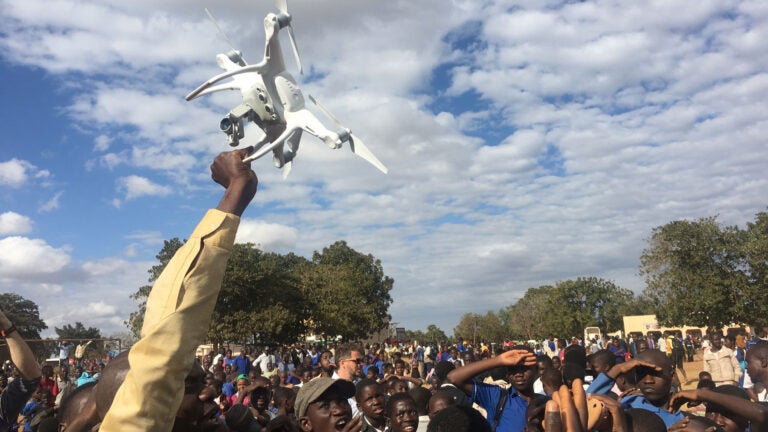
In Malawi, drones are tested for services such as delivering emergency medical supplies. (Photo/Courtesy of Globhe)
Drones that save lives? Meet humanitarian aid’s newest tool
Unmanned aerial vehicles could help health providers make effective use of emerging technology
Public health experts and people providing humanitarian aid in remote areas are now using drones to deliver medical supplies and monitor potentially dangerous emergency scenes.
It’s a trend that’s caught the attention of USC global health experts.
The drones are such powerful tools for humanitarian aid that the researchers are teaching an online course on the topic. This month, USC’s Institute for Global Health is conducting what is believed to be the first online course on the use of drones for health. Some of the issues around drones are potentially sticky or controversial: Drone pilots sometimes must fly medicine across national borders, potentially violating the law, for example. But USC experts aim to share best practices and enable public health specialists to interact with experts from USC and across the world.
Rwanda is leading the way in this space. They’ve been able to cut transport times from hours to 15 minutes.
Shubha Kumar
“Rwanda is leading the way in this space. They’ve been able to cut transport times from hours to 15 minutes,” said Shubha Kumar, assistant professor of preventive medicine at the Keck School of Medicine of USC. Swedish drone services provider Globhe approached Kumar to co-create and teach the course.
Drones for humanitarian aid — and emergency response
Today’s drones, depending on the model, can carry up to 5 kilograms of medical goods, vaccines and other supplies. They can travel as far as 160 kilometers, making them especially useful for humanitarian aid across significant distances.
Emergency response is another popular application for drones, Kumar said.
“In Norway, they’ve piloted them to get defibrillators onto the scene, where minutes can make a difference in preventing brain damage. In rural areas, having emergency blood right away during childbirth can also be a life-saver.”
Kumar said that while countries as far apart as Sweden and Papua New Guinea are working with drones, African nations lead the way in using the technology.
“Malawi has a drone corridor,” she said. “And as governments and businesses are pressured to become more socially responsible, we’re seeing more social entrepreneurship emerging: If UPS can use drones to deliver packages, why not use them for social purposes?”
Drones have also been used in Haiti and Nepal to get aerial views of disaster areas for rescue and recovery operations.
Expertise in global health
Kumar, who directs USC’s Master of Public Health online program, said she strives to make global health education global through online education models. She co-teaches other online global health courses, similar to the drones course, that attract students from around the world.
“Through our online courses, they can attend a live session with leading experts around the world, who would never have time to fly here to lead a class.”
The course will give students an overview of how drones are being used today in these areas and related fields.
“But it’s really only starting,” Kumar said. “So we’re excited to be on the forefront of where it’s heading.”



